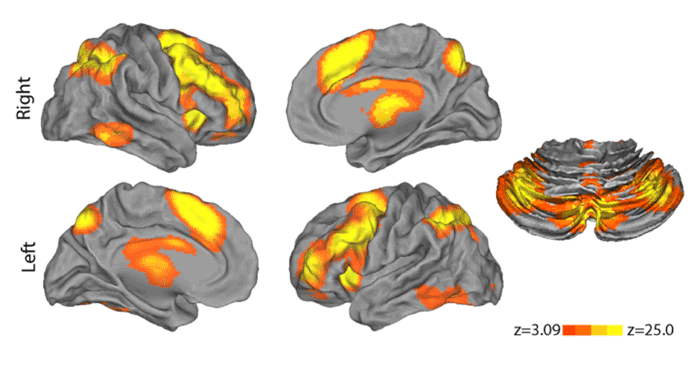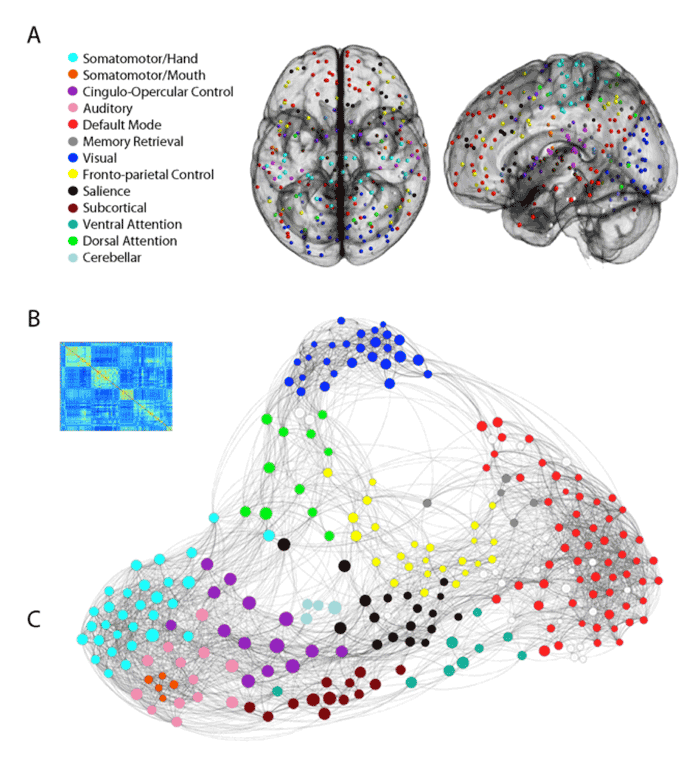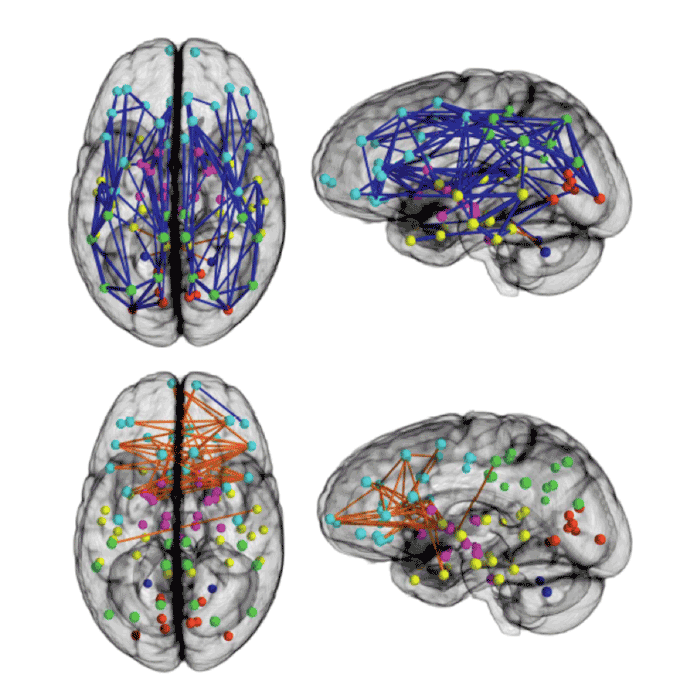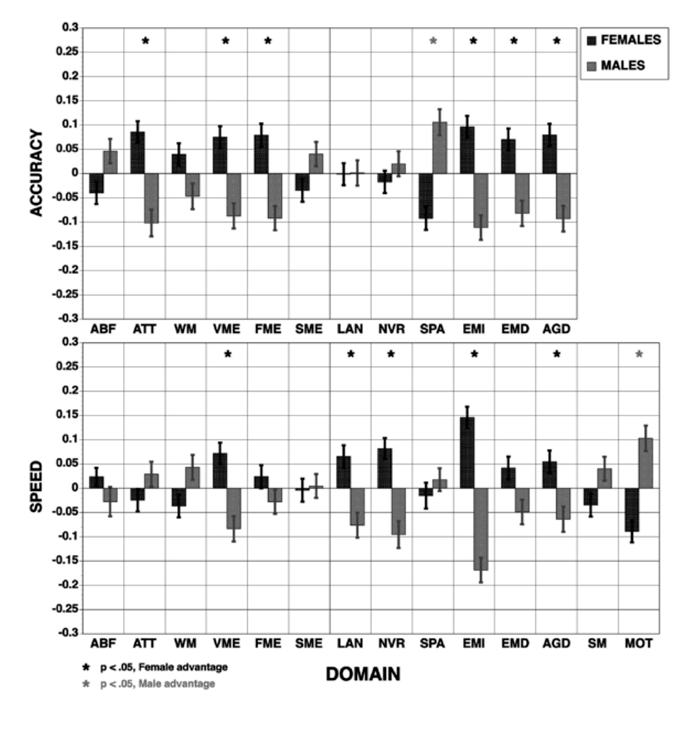Philadelphia Neurodevelopmental Cohort
The Philadelphia Neurodevelopmental Cohort (PNC) is a research initiative funded by NIMH through the American Reinvestment and Recovery Act of 2009 (ARRA). The initiative focuses on characterizing brain and behavior interaction with genetics. This is a collaborative research effort between the Brain Behavior Laboratory at the University of Pennsylvania and the Center for Applied Genomics at the Children’s Hospital of Philadelphia, led by Raquel E. Gur, MD, PhD at the University of Pennsylvania and Hakon Hakonarson, MD, PhD at the Children’s Hospital of Philadelphia (CHOP).
The PNC includes a population-based sample of over 9500 individuals from the greater Philadelphia area, ages 8-21 years who received medical care at the CHOP network. The participants presented for diverse medical conditions, ranging from a well child visit and minor problems to chronic condition management to potentially life threatening health problems. They were not ascertained through psychiatric services. They were initially enrolled in the genetic study at CHOP’s Center for Applied Genomics (CAG). Upon assent/consent, participants were genotyped during the time of their clinical visit and provided written permission to be recontacted for studies of complex pediatric disorders. The PNC participants were selected at random after stratification by sex, age and ethnicity. The overall inclusion criteria included 1) ability to provide signed informed consent (parental consent was required for participants under age 18), 2) English language proficiency, and 3) physical and cognitive ability to participate in computerized clinical assessment and neurocognitive testing. All PNC participants were assessed neuropsychiatrically with a structured interview and completed the Computerized Neurocognitive Battery (CNB). A total of 1445 participants also received neuroimaging that included functional MRI (resting state and activated blood oxygenation-level dependent and perfusion measures with arterial spin labeling), structural MRI, and diffusion tensor imaging (DTI). (Satterthwaite et al., 2014)
The Kiddie-SADS Family Study Interview (Kaufman et al., 1997) was adapted to a computerized format. Young adults (ages 18-21) were interviewed individually. Participants between the ages of 11-17 were interviewed individually and collateral interviews were conducted independently with a parent. For the youngest group (ages 8-10), only collateral information was obtained from the parent. The interview included demographics, timeline of life events (e.g. moves, divorce, death), school performance, medical history that included review of systems and current medications, screener for psychopathology, family interview for genetic studies, global assessment of functioning, and assessor’s observations. The screener is based on major psychiatric disorders as defined in the Diagnostic and Statistical Manual (DSM-IV). The screener evaluated the presence, duration, distress and impairment associated with symptoms in Mood Disorders (Depression, Mania/Hypomania), Anxiety Disorders (Generalized, Separation, Phobias, Social, Panic, Agoraphobia, Obsessive Compulsive), Post Traumatic Stress Disorder (PTSD), Attention Deficit Hyperactivity Disorder (ADHD), Oppositional Defiant Disorder, Conduct Disorder, Eating Disorders, and Psychosis including sub-threshold symptoms.
A one-hour 20 minutes computerized neurocognitive battery (CNB) was administered to participants using a system developed at Penn (Gur et al., 2010). The CNB enables quantitative assessment of multiple cognitive domains and its validation with functional neuroimaging facilitates identification of neural dysfunction associated with poor performance. The CNB consisted of 14 tests assessing 5 neurobehavioral functions: Executive-Control, Episodic Memory, Complex Cognition, Social Cognition, and Sensorimotor Speed. Each test provides measures of both accuracy and speed except for two measuring speed only. Instructions and vocabulary for verbal stimuli were simplified from the adult CNB. Tests were abbreviated based on psychometric analysis of data from other large-scale genomic studies. A standardized reading test from the Wide Range Achievement Test (WRAT4, Wilkinson & Robertson, 2006,) was administered first to determine participants' ability to complete the battery and to provide an estimate of IQ.
Multimodal neuroimaging was performed on a subsample of 1445 participants who were cognitively and clinically assessed. Neuroimaging measures included T1-weighted structural neuroimaging, diffusion tensor imaging, perfusion neuroimaging using arterial spin labeling, functional imaging tasks of working memory and emotion identification, and resting state imaging of functional connectivity. All imaging data were acquired on the same scanner (Siemens Tim Trio 3 Tesla, Erlangen, Germany; 32 channel head coil) using the same imaging sequences. To acclimate subjects to the MRI environment, a mock scanning session was conducted prior to scanning for each individual using a decommissioned MRI scanner and head coil. During these sessions, feedback regarding head movement was provided using the MoTrack (Psychology Software Tools, Inc., Sharpsburg, PA) motion tracking system.
All non-identifying data acquired as part of the PNC are made public and freely available to qualified investigators through the database of Genotypes and Phenotypes (dbGaP) supported by NIMH.




Satterthwaite TD, Wolf DH, Roalf DR, Ruparel K, Erus G, Vandekar S, Gennatas ED, Elliott MA, Smith A, Hakonarson H, Verma R, Davatzikos C, Gur RC, Gur RE. Linked Sex Differences in Cognition and Functional Connectivity in Youth. Cerebral Cortex (in press) 2014.
Ingalhalikar M, Smith A, Parker D, Satterthwaite TD, Elliott ME, Ruparel K, Hakonarson H, Gur RE, Gur RC, Verma R. Reply to Joel and Tarrasch: On misreading and shooting the messenger. Proceedings of the National Academy of Sciences: (in press) 2014.
Roalf, D.R., Gur, R.E., Ruparel, K., Calkins, Satterthwaite, T.D., Bilker, W.B., Hakonarson, H., Harris, L.J. & Gur, R.C. Within-individual variability in neurocognitive performance: Sex and age-related differences in youths from ages 8 to 21. Neuropsychology, (in press) 2014.
Gur RC, Calkins ME, Satterthwaite TD, Ruparel K, Bilker WB, Moore TM, Savitt AP,
Hakonarson H, Gur RE. Neurocognitive Growth Charting in Psychosis Spectrum Youths. JAMA Psychiatry. 2014 Feb 5. doi: 10.1001/jamapsychiatry.2013.4190
PMID: 24499990
Satterthwaite TD, Elliott MA, Ruparel K, Loughead J, Prabhakaran K, Calkins ME, Hopson R, Jackson C, Keefe J, Riley M, Mentch FD, Sleiman P, Verma R, Davatzikos C, Hakonarson H, Gur RC, Gur RE. Neuroimaging of the Philadelphia neurodevelopmental cohort. Neuroimage. 2014 Feb 1;86:544-53.
PMID: 23921101
Erus G, Battapaday H, Satterthwaite TD, Hakonarson H, Gur RE, Davatzikos C, Gur RC.
Imaging Patterns of Brain Development and their Relationship to Cognition. Cereb Cortex. 2014 Jan 27.
PMID: 24421175
Ingalhalikar M, Smith A, Parker D, Satterthwaite TD, Elliott MA, Ruparel K, Hakonarson H, Gur RE, Gur RC, Verma R.Sex differences in structural connectome of the human brain. Proc Natl Acad Sci U S A. 2014 Jan 14;111(2):823-8.
PMID:24297904
Eavani H, Satterthwaite TD, Gur RE, Gur RC, Davatzikos C. Identifying patterns in temporal variation of functional connectivity using resting state fmri. Proc IEEE Int Symp Biomed Imaging. 2013 Dec 31;2013:1086-1089.
PMID: 24443693
Satterthwaite, T.D., Ruparel, K., Wolf, D.H., Vandekar, S., Roalf, D.R., Jackson, C., Elliott, M.A., Bilker, W.B., Calkins, M.E., Parbhakaran, K., Davatzikos, C., Hakonarson, H., Gur, R.C., & Gur, R.E. Sex differences in the effect of puberty on hippocampal morphology. Journal of the American Academy of Child and Adolescent Psychiatry Journal of the American Academy of Child & Adolescent Psychiatry - 23 December 2013 (10.1016/j.jaac.2013.12.002)
Satterthwaite TD, Wolf DH, Ruparel K, Erus G, Elliott MA, Eickhoff SB, Gennatas ED,
Jackson C, Prabhakaran K, Smith A, Hakonarson H, Verma R, Davatzikos C, Gur RE, Gur RC. Heterogeneous impact of motion on fundamental patterns of developmental changes in functional connectivity during youth. Neuroimage. 2013 Dec;83:45-57.
PMID: 23792981
Satterthwaite TD, Wolf DH, Erus G, Ruparel K, Elliott MA, Gennatas ED, Hopson R, Jackson C, Prabhakaran K, Bilker WB, Calkins ME, Loughead J, Smith A, Roalf DR, Hakonarson H, Verma R, Davatzikos C, Gur RC, Gur RE. Functional maturation of the executive system during adolescence Neurosci. 2013 Oct 9; 33(41):16249-61.
PMID: 24107956
Gur RE, Kaltman D, Melhem ER, Ruparel K, Prabhakaran K, Riley M, Yodh E, Hakonarson H, Satterthwaite T, Gur RC. Incidental findings in youths volunteering for brain MRI research. AJNR Am J Neuroradiol. 2013 Oct; 34(10):2021-5.
PMID: 23811972
Satterthwaite TD, Elliott MA, Gerraty RT, Ruparel K, Loughead J, Calkins ME, Eickhoff SB, Hakonarson H, Gur RC, Gur RE, Wolf DH. An improved framework for confound regression and filtering for control of motion artifact in preprocessing of resting-state functional connectivity data. Neuroimage. 2013 Jan 1;64:240-56.
PMID: 22926292
Eavani H, Satterthwaite TD, Gur RE, Gur RC, Davatzikos C. Unsupervised learning of functional network dynamics in resting state fMRI. Information Processing in Medical Imaging. 2013.
Honnorat N, Eavani H, Satterthwaite TD, Davatzikos C. A Graph-based Brain Parcellation Method Extracting Sparse Networks. IEEE International Workshop on Pattern Recognition in Neuroimaging (PRNI). 2013.
Zhang T, Satterthwaite TD, Davatzikos C. ODVBA-C: Optimally Descrimitive Voxel Based Analysis of Continuous Variables. IEEE International Workshop on Pattern Recognition in Neuroimaging (PRNI). 2013.
Satterthwaite TD, Ruparel K, Loughead J, Elliott MA, Gerraty RT, Calkins ME, Hakonarson H, Gur RC, Gur RE, Wolf DH. Being right is its own reward: load and performance related ventral striatum activation to correct responses during a working memory task in youth. Neuroimage. 2012 Jul 2;61(3):723-9.
PMID: 22484308
Satterthwaite TD, Wolf DH, Loughead J, Ruparel K, Elliott MA, Hakonarson H, Gur RC, Gur RE. Impact of in-scanner head motion on multiple measures of functional connectivity: relevance for studies of neurodevelopment in youth. Neuroimage. 2012 Mar;60(1):623-32.
PMID: 22233733
Gur RC, Richard J, Calkins ME, Chiavacci R, Hansen JA, Bilker WB, Loughead J,
Connolly JJ, Qiu H, Mentch FD, Abou-Sleiman PM, Hakonarson H, Gur RE. Age group
and sex differences in performance on a computerized neurocognitive battery in children age 8-21.Neuropsychology. 2012 Mar 26;(2):251-65.
PMID: 22251308
Eavani H, Filipovych R, Satterthwaite TD, Gur RE, Gur RC, Davatzikos C. Sparse dictionary learning of resting state fMRI networks. IEEE: International Workshop on Pattern Recognition in Neuroimaging (PRNI). 2012.
Zhang T, Satterthwaite TD, Elliott MA, Gur RC, Gur RE, Davatzikos C. Multivariate fMRI Analysis using Optimally-Discriminative Voxel-Based Analysis. IEEE: International Workshop on Pattern Recognition in Neuroimaging (PRNI). 2012.
Back to Top
